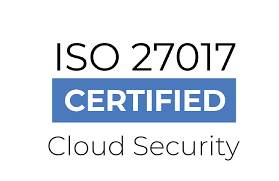CLOUD RISK MANAGEMENT

What is Cloud Risk Management?
Cloud Risk Management is the ongoing process of identifying, assessing, and mitigating the various risks associated with using cloud computing services. As an increasingly popular way to store data and run applications, the cloud offers numerous benefits, but it also introduces new areas of potential vulnerability.
Importance of Cloud Risk Management?
- Proactive Risk Identification and Mitigation: Cloud risk management helps identify potential threats before they become incidents, allowing you to take preventative measures and minimize damage.
- Improved Data Protection: Cloud platforms offer robust security features, but risk management helps ensure you leverage them effectively and address any gaps in your cloud security posture.
- Compliance with Regulations: Many industries have strict data privacy and security regulations. Cloud risk management helps you comply with these regulations and avoid hefty fines or reputational damage.
- Reduced Expenses from Security Incidents: Data breaches and other security incidents can be incredibly costly. Cloud risk management helps prevent these incidents, saving you money in the long run.
- Optimized Cloud Resource Utilization: Risk management helps identify and eliminate underutilized cloud resources, reducing your cloud spending.
- Improved Decision-Making: By understanding your cloud risks, you can make informed decisions about cloud resource allocation and investment, optimizing your overall cloud spending.


Benefits of Cloud Risk Management?
Cloud risk management offers a wide range of benefits for organizations of all sizes. Here are some of the key advantages:
Enhanced security and compliance:
- Proactive risk identification and mitigation: Cloud risk management helps identify potential threats before they become incidents, allowing you to take preventative measures and minimize damage.
- Improved data protection: Cloud platforms offer robust security features, but risk management helps ensure you leverage them effectively and address any gaps in your cloud security posture.
- Compliance with regulations: Many industries have strict data privacy and security regulations. Cloud risk management helps you comply with these regulations and avoid hefty fines or reputational damage.
Cost optimization:
- Reduced expenses from security incidents: Data breaches and other security incidents can be incredibly costly. Cloud risk management helps prevent these incidents, saving you money in the long run.
- Optimized cloud resource utilization: Risk management helps identify and eliminate underutilized cloud resources, reducing your cloud spending.
- Improved decision-making: By understanding your cloud risks, you can make informed decisions about cloud resource allocation and investment, optimizing your overall cloud spending.
Our Approach
1. Identifying Risks:
- Asset Inventorying : Identifying all your cloud assets like applications, data, infrastructure, and configurations.
- Threat Assessment: Analyzing potential threats like data breaches, malware attacks, outages, and compliance violations.
- Vulnerability Assessment: Identifying weaknesses in your cloud environment and configurations.
2. Analyzing Risks:
- Likelihood: Estimating the probability of each threat occurring based on industry trends and historical data.
- Impact: Assessing the potential damage each threat could cause, considering financial loss, reputational harm, and operational disruption.
- Risk Prioritization: Prioritizing risks based on their likelihood and impact to focus your efforts on the most critical ones.
3. Evaluating Risks:
- Defining Risk Tolerance: Determining the level of risk your organization is willing to accept for different assets and activities.
- Conducting Cost-Benefit Analysis: Evaluating the cost of implementing controls compared to the potential cost of a risk occurring.
- Choosing Risk Treatment Options: Deciding how to handle each risk, such as avoiding, mitigating, transferring, or accepting it.
4. Treating Risks:
- Implementing Security Controls: Applying technical, administrative, and physical controls to mitigate identified risks.
- Developing Incident Response Plans: Planing how to respond to security incidents quickly and effectively.
- Train Employees: Ensuring your employees understand cloud security best practices and their roles in managing risks.
5. Monitoring and Reviewing:
- Continuously monitoring your cloud environment for new threats and vulnerabilities.
- Regularly reviewing your risk management program and updating it as needed.
- Testing your incident response plans to ensure they are effective.








